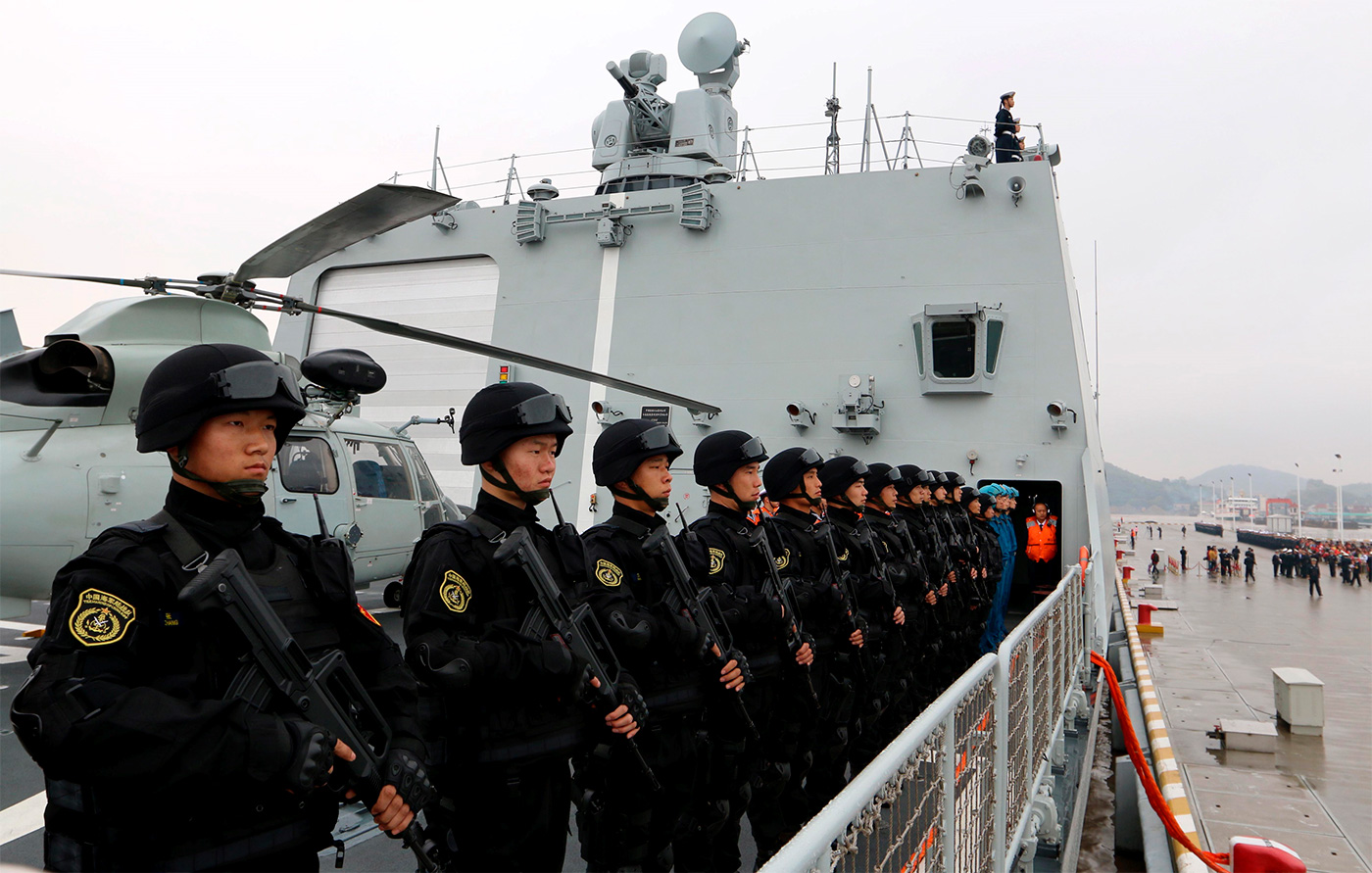The Mauritian government confirmed in a press release on 18 May that India is fully financing a new three-kilometer-long runway on the island of North Agalega where New Delhi has had a military base since 2015. Observers reported these construction efforts a few months ago, speculating on India’s strategic intentions.
Putting two and two together, namely India’s existing patrols with France and South Africa in the Mozambique Channel as well as the ongoing expansion of its base in North Agalega island, there’s a possibility that India might seriously consider participating in a multilateral maritime mission connected to France’s prospective security plans in northern Mozambique. In any case, India’s North Agalega base will certainly see some relevant military use in one way or another.
By all accounts, India’s Mauritian military base on the island of North Agalega appears to be first and foremost premised on monitoring Chinese activity in the region. It is probably meant to facilitate more robust intelligence collection efforts as well, which could be leveraged to obtain competitive advantages for its AAGC projects in the region. The most likely scenario is that India teams up with its new American, Emirati and French partners to bolster its joint economic outreaches with Japan. South Africa might jump on board too, not only because it has a clear interest in doing so within its “sphere of influence” but also to deflect from potentially forthcoming criticism that India is advancing strategic interests of the West in East Africa.
The Mauritian government confirmed in a press release on 18 May that India is fully financing a new three-kilometer-long runway on the island of North Agalega where New Delhi has had a military base since 2015. Observers reported these construction efforts a few months ago, speculating on India’s strategic intentions. These include Australia’s prestigious Lowy Institute, which wrote in March that “India regards the new base to be essential for facilitating both air and surface maritime patrols in the south-west Indian Ocean, and as an intelligence outpost.” They additionally noted that “Agalega will also facilitate maritime patrols over the Mozambique Channel – now a popular passage for large commercial ships, particularly oil tankers.”
That point is particularly important in light of the “Mozambique News Reports & Clippings” expert-level newsletter’s 16 May publication. Editor Joseph Hanlon mostly focused on the possibility of France expanding its security presence in northern Mozambique in order to protect national champion Total’s offshore energy investments there from growing insurgent threats. Of relevance, however, was his prediction that “It seems likely that Total and France will demand that the French navy take control of the Cabo Delgado coastal waters and the gas area to get the terror listing lifted quickly, and maintain control for some years to come. But it would be possible to carry out joint patrols with the Mozambican, South Africa and Indian navies.”
Expanding Hard Power Footprint
Putting two and two together, namely India’s existing patrols with France and South Africa in the Mozambique Channel as well as the ongoing expansion of its base in North Agalega island, there’s a possibility that Hanlon’s prediction might come true. India might indeed seriously consider participating in a multilateral maritime mission connected to France’s prospective security plans in northern Mozambique. It should be remembered that the insurgency there, which American officials recently connected to ISIS, has been growing for the past few years. India might therefore have timed its base expansion plans to coincide with this possible mission. It could also just be a convenient coincidence too, which is admittedly possible.v
In any case, India’s North Agalega base will certainly see some relevant military use in one way or another since it probably isn’t solely for prestige. The Lowy Institute’s report claimed that “this facility in Mauritius will provide an important staging point for India’s new P8I fleet, which recently conducted its first joint patrol with France from nearby Réunion.” Combined with the earlier cited observation about India’s role in the Mozambique Channel, they assert that “The staging point will also allow the Indian Navy to observe shipping routes around Southern Africa, which now account for a significant portion of China’s energy imports. The island will also presumably provide a useful location for communications and electronic intelligence facilities.”
In other words, this facility is likely intended to function as a crucial node in India’s activities throughout the southwestern corner of its eponymous ocean as well as facilitate intelligence collection activities across East Africa. Not only might it play a supportive role in any French military scenario in northern Mozambique, but it also has the purpose of monitoring China’s naval activity in this broader region. In addition, the speculation about its role in India’s regional intelligence efforts suggests that New Delhi might double down on its espionage activities in that part of Africa, once again presumably on account of a desire to keep tabs on China where Beijing’s footprint is growing due to the expansion of its Belt & Road Initiative (BRI) projects.
Issues of Economic Competition
Along that line of thought, it should be mentioned that India had earlier debuted the Asia-Africa Growth Corridor (AAGC) in joint partnership with Japan in 2016. This vague series of mostly soft infrastructure projects was interpreted by many as an attempt to fill a development niche that China was regarded by some critical observers as being hitherto neglected. It never really got off the ground, though, and China has since expanded the scope of its BRI projects to address the perceived shortcomings that the Quad members, India and Japan, had sought to take advantage of to serve as their entry points into the African infrastructure race. Nevertheless, given the reported scaling back of some BRI projects, the AAGC might try to make a comeback.
That is not to say that it’s guaranteed to succeed but just that it’s possible that India might attempt to leverage its presumably bolstered regional intelligence capabilities via its newly expanded base in North Agalega island to that end. Such a strategy would be sensible enough, considering that its rivalry with China was growing in recent years in spite of February’s synchronized disengagement along their contentious frontier. As India tends to seek multilateral solutions to its international challenges, it might very well aspire to synergize these efforts with France, the U.S., and perhaps even the UAE with whom the nation has recently grown much closer and which is a rising force in Africa—especially, in the Horn of Africa.
With this insight in mind, it can be said that India’s base in North Agalega is meant to function as a springboard for more robust regional engagement in the coming years, both of hard and soft nature. The former refers to the country’s desire to keep tabs on Chinese naval activity in the southwestern corner of the Indian Ocean as well as possibly participate in multilateral maritime operations there, be it an anti-piracy/terrorist operation or simply a disaster relief. The latter refers to India’s allegedly bolstered regional intelligence collection efforts that could be leveraged for the purpose of gaining a competitive edge for the AAGC vis-a-vis BRI in some respects.
Seeking Solutions to Bilateral Issues
Besides, one should not forget that India’s fellow BRICS member South Africa is located in relative proximity to New Delhi’s Mauritian base. The country’s current government is believed to be closer to the U.S. than under former President Zuma. India, too, has been moving closer to the U.S., especially through the Quad framework. It is therefore possible that India might seek to involve South Africa at least in the economic dimension of its prospective regional outreach strategy—not just for pragmatism’s sake but also to deflect from criticism that its presumed intentions vis-a-vis China are against the multipolar spirit supposed to be embodied by BRICS.
There is also the chance, however remote it may seem at the moment, that India and China enter into a grand rapprochement with one another, which results in them synergizing their economic activities in East Africa. This would naturally be the best-case scenario that could lead to multilaterally beneficial outcomes for all regional stakeholders. India and China could jointly assist Africa’s ascent across the 21st century, ideally through trilateral projects instead of competition between China’s BRI and the Indo-Japanese AAGC. Of course, such competition might also result in positive outcomes for the region, but it might eventually shift from “friendly” to “unfriendly” in the future, with unpredictable consequences.
By all accounts, India’s Mauritian military base on the island of North Agalega appears to be first and foremost premised on monitoring Chinese activity in the region. It is probably meant to facilitate more robust intelligence collection efforts as well, which could be leveraged to obtain competitive advantages for its AAGC projects in the region. The most likely scenario is that India teams up with its new American, Emirati and French partners to bolster its joint economic outreaches with Japan. South Africa might jump on board too, not only because it has a clear interest in doing so within its “sphere of influence” but also to deflect from potentially forthcoming criticism that India is advancing strategic interests of the West in East Africa.






